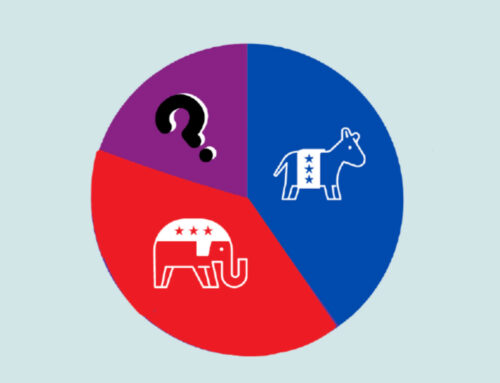The race to replace George Santos has come and gone, and while it will take some time to fully analyze this result, there are some important high-level takeaways worth keeping in mind.
1) The GOP has no answers on abortion rights and the issue is growing in salience
As we learned in 2022, where voters perceived abortion rights to be at risk and saw their vote as a means to saving that right, turnout from abortion rights supporters skyrocketed and independent voters swung to Democratic candidates. However, in races where the issue wasn’t in the forefront (including this very congressional district in 2022), Democratic turnout suffered and independents swung to the GOP. As it has become clear that Republicans seek to ban abortion nationwide, the issue is rising in salience, everywhere. Mazi Pilip learned the hard way that there is no middle ground on this issue, when the middle ground you’re proposing will result in women losing access to a fundamental right.
2) Republicans overplayed their hand on immigration, and undermined their own case in Washington
Republicans were confident that they had found a winning issue in this special election when they launched attack after attack on Democrat Tom Suozzi on immigration and border security. Given that thousands of migrants have been bused to the region from border states, the issue was far from abstract for voters of the 3rd district. Yet the GOP abandoned a bipartisan legislative agreement in the US Senate last week at the direction of Donald Trump, because he didn’t want to lose a campaign issue against President Biden. Unfortunately for the GOP, they said the quiet part aloud and telegraphed this plan to, well, everyone. Voters in New York clearly took notice, and the central GOP strategy in this race fell flat, or perhaps even backfired. It’s worth noting that voters of color account for about 1 in 4 votes in this district, including substantial Asian and Latino American populations.
3) The Polls Missed. Again.
The public polls in this special election showed a very close race, with none predicting a margin greater than 4%. As of this morning, Tom Suozzi leads by about 8%. As was the case in 2022, the polls had a pro-GOP bias. While I’m not of the opinion that polling is broken, doing it right is harder than ever. And perhaps we should think twice before basing our entire theories of the 2024 election on tiny poll subgroups with response rates below 1% (yes, this is a reference to the “low propensity voters have abandoned Democrats” theory).
4) AAPI Voters Delivered. Again.
In 2020 we talked about how Asian American voters were the margin of victory in delivering the White House for Democrats. As we approach the 2024 elections, we know that AAPI voters have grown in population share by more than any other group, but it has been an open question as to if they will repeat their high-turnout performance of 4 years ago. We will have to wait for the individual turnout data from this special election to know how things shook out, but it seems likely they played a large role in Tom Suozzi’s win. About 1 in 6 voters in this district are Asian American. In the Queens portion of the district, that number is almost 1 in 3. As of this morning, Suozzi is up 24 points in Queens, a massive improvement over the Democratic candidate’s 3 point margin there in 2022.
5) Voting Early Matters
A familiar pattern emerged in this race as we analyzed the daily early voting reports that TargetSmart compiles for all elections. Democrats steadily banked votes ahead of election day, with huge margins among mail votes, and solid performances among early in person voters. Of course, Donald Trump famously convinced his supporters 4 years ago that mail voting was fraudulent, and the GOP continues to pay the price today. With a large lead heading into election day, the pressure was on the GOP to turn out substantially more of their supporters on a day that began with a snowstorm. While I don’t think we can write off the GOP loss to the weather (the snow stopped by midday and by all accounts the roads were cleared), it does highlight the risk the GOP is taking by largely avoiding early voting options.
That’s all for now. Our team will be compiling the full individual turnout data in order to better understand exactly how Democrats pulled off such a substantial victory margin in this race, and what that means looking forward to November (yes, special elections are meaningful predictors of future elections if you know what to look for). We’ll be sure to share what we learn, follow along @tbonier and @TargetSmart.





